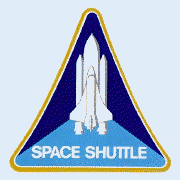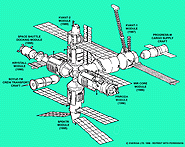|
|
|
Technical
Satellite viewing from LONDON - the International Space
Station will normally pass from West to East. If
you need any help in viewing, just send me an e-mail.
Just click here for more information from the German Space Operations Centre (GSOC) http://www.heavens-above.com/main.asp?Loc=London&Lat=51.517&Lng=-0.105&TZ=GMT
I have just had Starry Night Basic bought for me, and find it very good for the amateur astronomer.
An excerpt from a Beginner's Guide On How To Track Satellites. (also useful when looking at the Night Sky)
If you're starting to track satellites for the very first time, you've come to the right place. This is the beginner's satellite tracking site. Here are some easy steps to follow.
 |
1. First of all, pick a good spot for your observing site. Find a place that's out in the open, without a lot of trees or buildings to block your view of the sky, and, most importantly, get away from bright lights. They will completely ruin your night vision, and you will not see the satellite. Most satellites are pretty faint, so you'll have to make an extra effort to go someplace where there are no bright lights in your field of view, and where there is no strong sky glow from city lights. But if you are watching the International Space Station (ISS), or looking at the Night Sky, you should be able to do this from your own back garden! |
![]()
| 2. Now go to a really cool Internet web site operated by the German Space Operations Centre (GSOC) by clicking here: http://www.heavens-above.com and then clicking on the statement labeled "Select From the Data Base." Follow the instructions to find the nearest location to your observing site and adjust the time for daylight saving if applicable. Each time you go back to the GSOC website it will remember this location. Make a note of the co-ordinates for future use when visiting other sites. |  |
3. Visit whichever items you want on the GSOC site but make sure that you look at the Real-time ISS orbit display and the Sky Chart. This then enables you to check OFFLINE the current position of ISS and look at the real-time sky chart. The ISS Space Station IS the best to look for first because it is as bright as some of the brightest stars, and once you have managed to watch it crossing the sky, you will soon be spotting other satellites as well.
Another good website to get lots of space information is NASA. At some stage, you will need to enter the location details you got from GSOC, in order to track the satellites. The further you go into the tracking the more interesting it becomes. Click here to start your exploring liftoff.msfc.nasa.gov
Astronomy - The Night Sky
There are a few programs that you can get off the web that give you a 30 day trial, but one program is available FREE as long as you register it. This is Adastra version 2.5R and is available from www.coeli.com . Once again, it may take a little setting up each time it is used, but it is worthwhile.
 |
If you need any help just send an E-Mail | 
|
TheSargents back to Homepage
Wildlife Next page
Last revised: August 18, 2001.